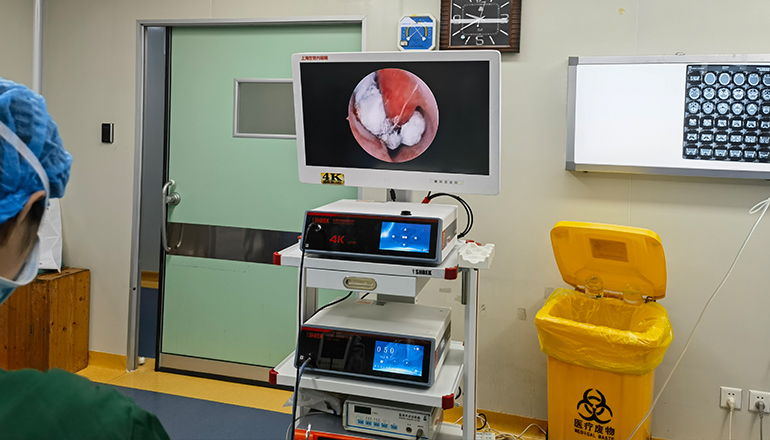- Shanghai, China
- [email protected]
- +86-21-58189111
Endoscopes have revolutionized the field of ENT (ear, nose, and throat) surgery. These minimally invasive instruments provide high-quality visualization of the inside of the nasal passages, throat, and ears, allowing for more accurate diagnoses and less invasive procedures. There are several applications of endoscopes in ENT operations, including sinus surgery, laryngoscopy, and otoscopy.
Sinus Surgery: Endoscopes are widely used in sinus surgery to visualize the inside of the nasal passages and sinuses. The endoscope is inserted through the nostril and advanced into the nasal cavity, allowing the surgeon to see the inside of the sinuses in detail. The endoscope can also be used to guide surgical instruments, such as suction and cutting tools, during sinus surgery. The use of endoscopes in sinus surgery has led to faster recovery times, less postoperative pain, and fewer complications compared to traditional open surgical techniques.
Laryngoscopy: Endoscopes are also used in laryngoscopy, which is the examination of the larynx (voice box) and vocal cords. The endoscope is inserted through the mouth or nose and advanced into the throat, allowing the surgeon to visualize the larynx and vocal cords. This can be used to diagnose and treat conditions such as vocal cord nodules, polyps, and tumors. Endoscopic laryngoscopy is less invasive than traditional laryngoscopy, which requires general anesthesia and a larger incision in the neck.
Otoscopy: Endoscopes are also used in otoscopy, which is the examination of the ear canal and eardrum. The endoscope is inserted into the ear canal and advanced towards the eardrum, allowing the surgeon to visualize the inside of the ear in detail. This can be used to diagnose and treat conditions such as ear infections, perforated eardrums, and tumors. Endoscopic otoscopy is less invasive than traditional otoscopy, which requires a larger incision behind the ear.

The use of endoscopes in ENT operations has led to less invasive procedures, faster recovery times, and improved patient outcomes. However, it is important that the surgical team is properly trained and experienced in the use of endoscopes to ensure safe and effective surgeries. In addition, proper maintenance and sterilization of the endoscopic equipment is essential to prevent infection and ensure patient safety.
Endoscopic Thyroidectomy: Endoscopes are also used in thyroid surgery. With the endoscopic approach, the surgeon can make smaller incisions and visualize the thyroid gland more clearly. This approach also minimizes scarring and reduces recovery time.
Endoscopic Dacryocystorhinostomy: Endoscopes can be used in a procedure called dacryocystorhinostomy, which is used to treat blocked tear ducts. The endoscope is inserted through the nose and into the tear ducts, allowing the surgeon to open and widen the blocked area.
Endoscopic Sinus Surgery for Cerebrospinal Fluid Leak Repair: Endoscopes can also be used in cerebrospinal fluid leak repair. In this procedure, the endoscope is used to visualize the area where the leak is occurring, and the surgeon can use surgical instruments to repair the leak.
In conclusion, endoscopes have revolutionized the field of ENT surgery. They allow for more accurate diagnoses and less invasive procedures, resulting in faster recovery times and improved patient outcomes. The use of endoscopes in ENT operations has expanded to include sinus surgery, laryngoscopy, otoscopy, thyroid surgery, dacryocystorhinostomy, and cerebrospinal fluid leak repair. As with any surgical procedure, it is important that the surgical team is properly trained and experienced in the use of endoscopes to ensure safe and effective surgeries. Proper maintenance and sterilization of the endoscopic equipment is also essential to prevent infection and ensure patient safety.
Leave a Comments